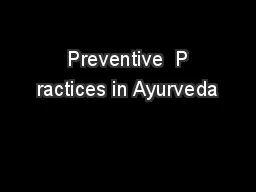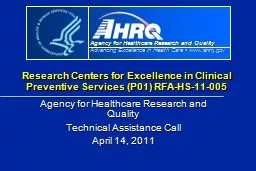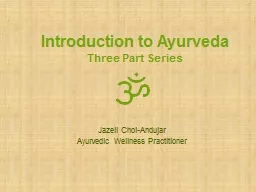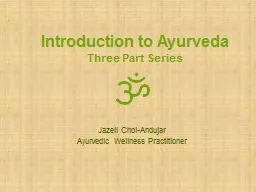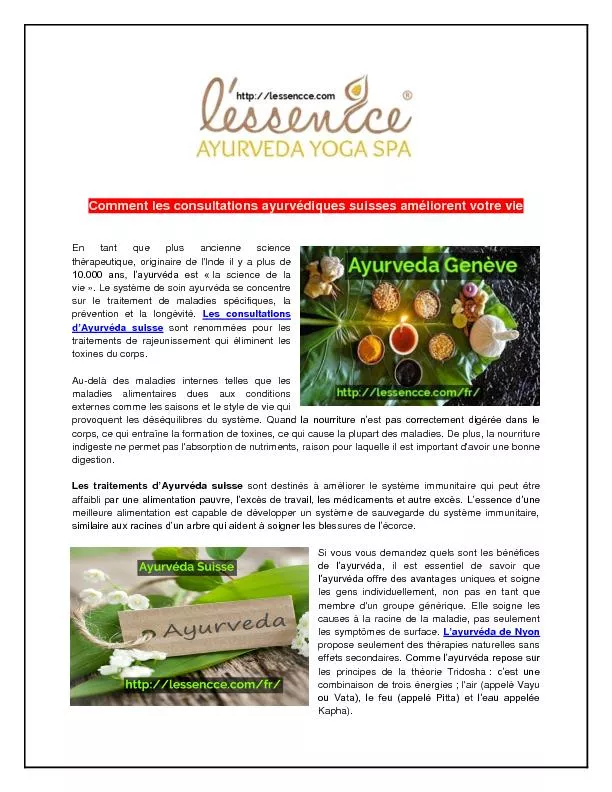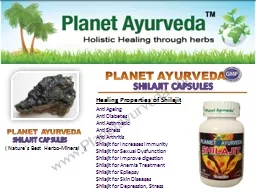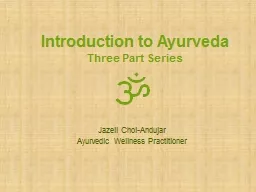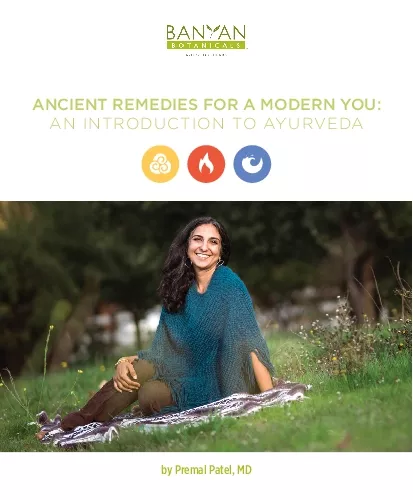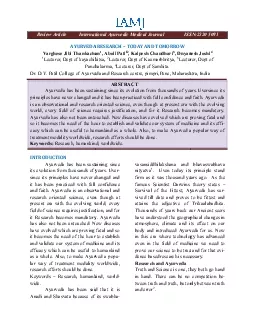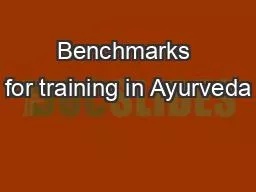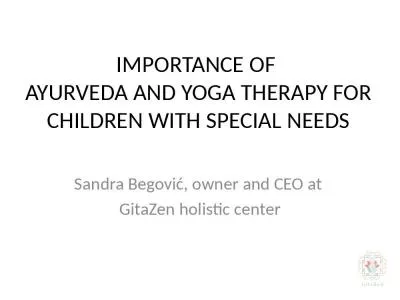PPT-Preventive P ractices in Ayurveda
Author : alexa-scheidler | Published Date : 2020-04-02
Fatima Raad Claim The purpose of this presentation is to address the different aspects of preventive practices according to Ayurveda that we can incorporate in our
Presentation Embed Code
Download Presentation
Download Presentation The PPT/PDF document " Preventive P ractices in Ayurveda" is the property of its rightful owner. Permission is granted to download and print the materials on this website for personal, non-commercial use only, and to display it on your personal computer provided you do not modify the materials and that you retain all copyright notices contained in the materials. By downloading content from our website, you accept the terms of this agreement.
Preventive P ractices in Ayurveda: Transcript
Download Rules Of Document
" Preventive P ractices in Ayurveda"The content belongs to its owner. You may download and print it for personal use, without modification, and keep all copyright notices. By downloading, you agree to these terms.
Related Documents

